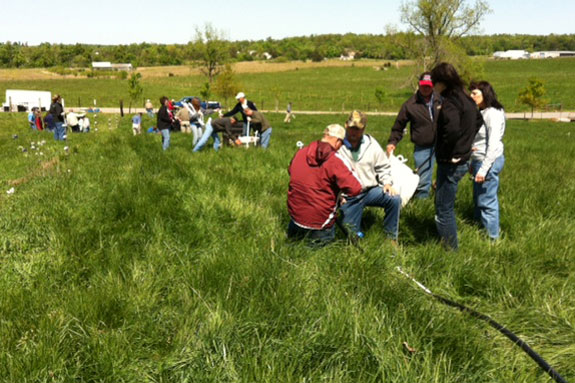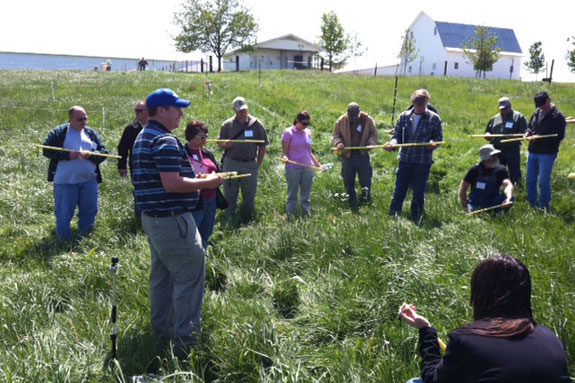Thirty-three producers and industry representatives attended, representing 29 counties.
Attendees came from a variety of backgrounds including beef, dairy, sheep, goats and beginning farmers who are deciding how to manage newly acquired land.

A group of experts from the University of Kentucky, Natural Resources Conservation Service (NRCS), and a local fencing representative discussed topics to increase forage production and animal performance.
Lectures were followed by hands-on sessions in which participants gained practical field experience.
Activities included building a rotational grazing system which involved setting up a temporary water and fencing system and performing various methods to assess pasture yields.
NRCS conservationists and UK experts assisted participants in setting up a rotational grazing system for their personal farms with the use of aerial photographs.
A fall grazing school is scheduled for August 11-12 in Woodford County. This grazing school will consist of similar topics and hands-on sessions but will put more focus on summer and fall grazing options.
To register or for more information, email Lyndsay Jones or call (859) 257-7512.
Co-sponsors of the event are Master Grazer Educational Program, Kentucky Agricultural Development Fund, UK College of Agriculture, Natural Resources Conservation Service, and Kentucky Forage and Grassland Council. FG
—From University of Kentucky Research and Education Center news release
PHOTOS
TOP: Graduate candidate David Davis explains how to use a grazing stick to assess pasture yield.
BOTTOM: Dr. Ray Smith, forage extension specialist, demonstrates the use of a falling plate meter to assess pasture yield. Photos courtesy of University of Kentucky Research and Education Center.










